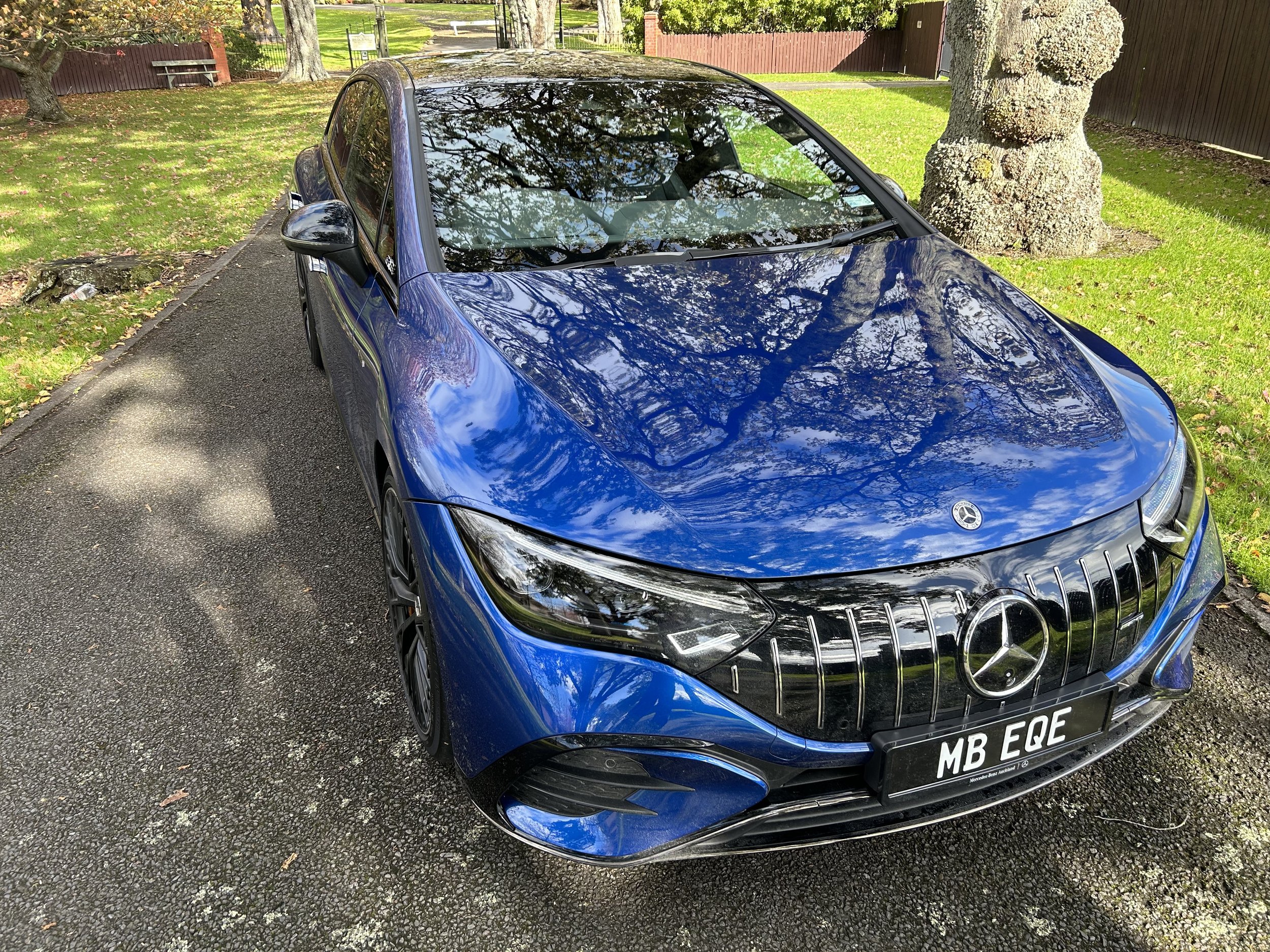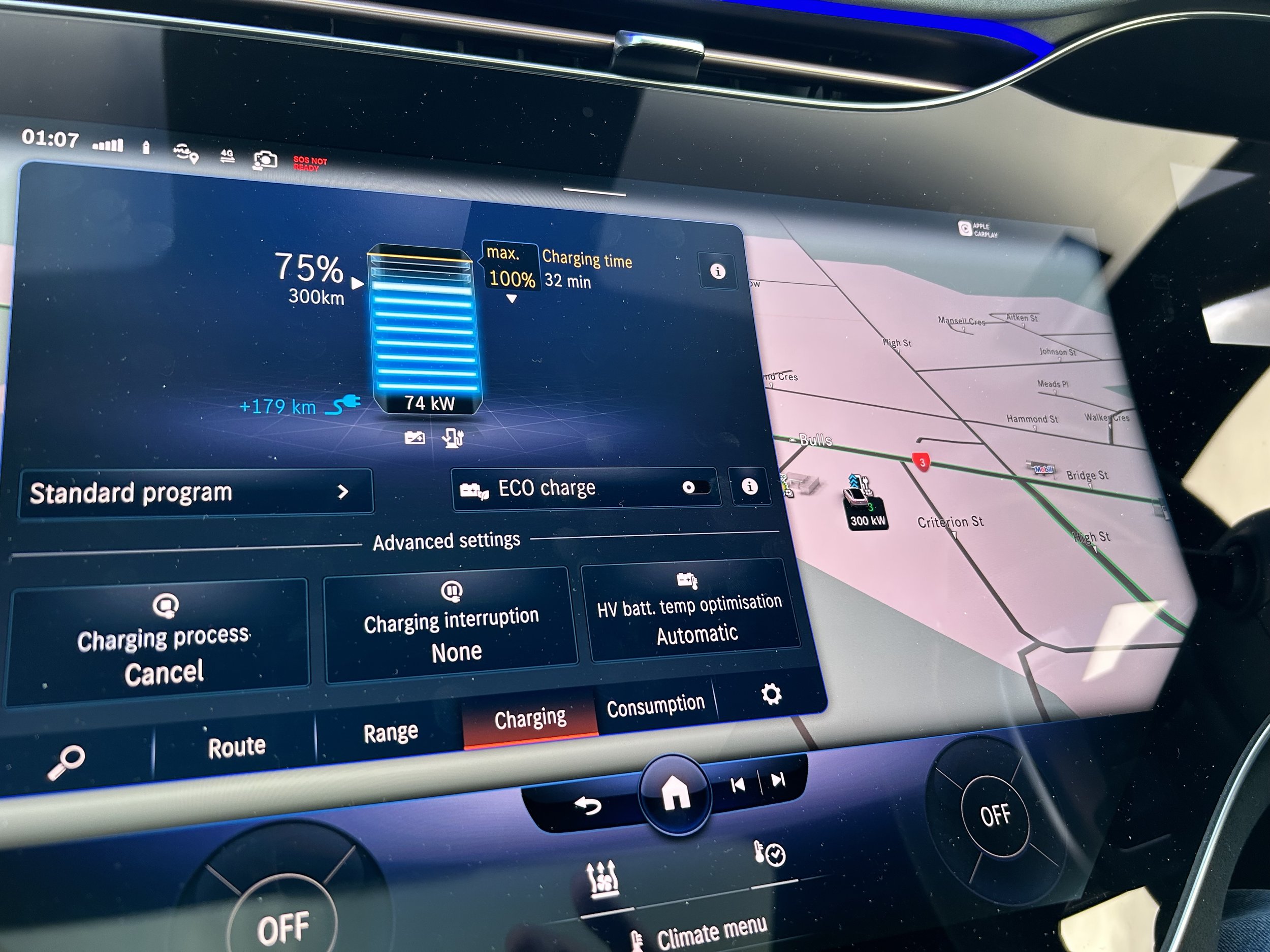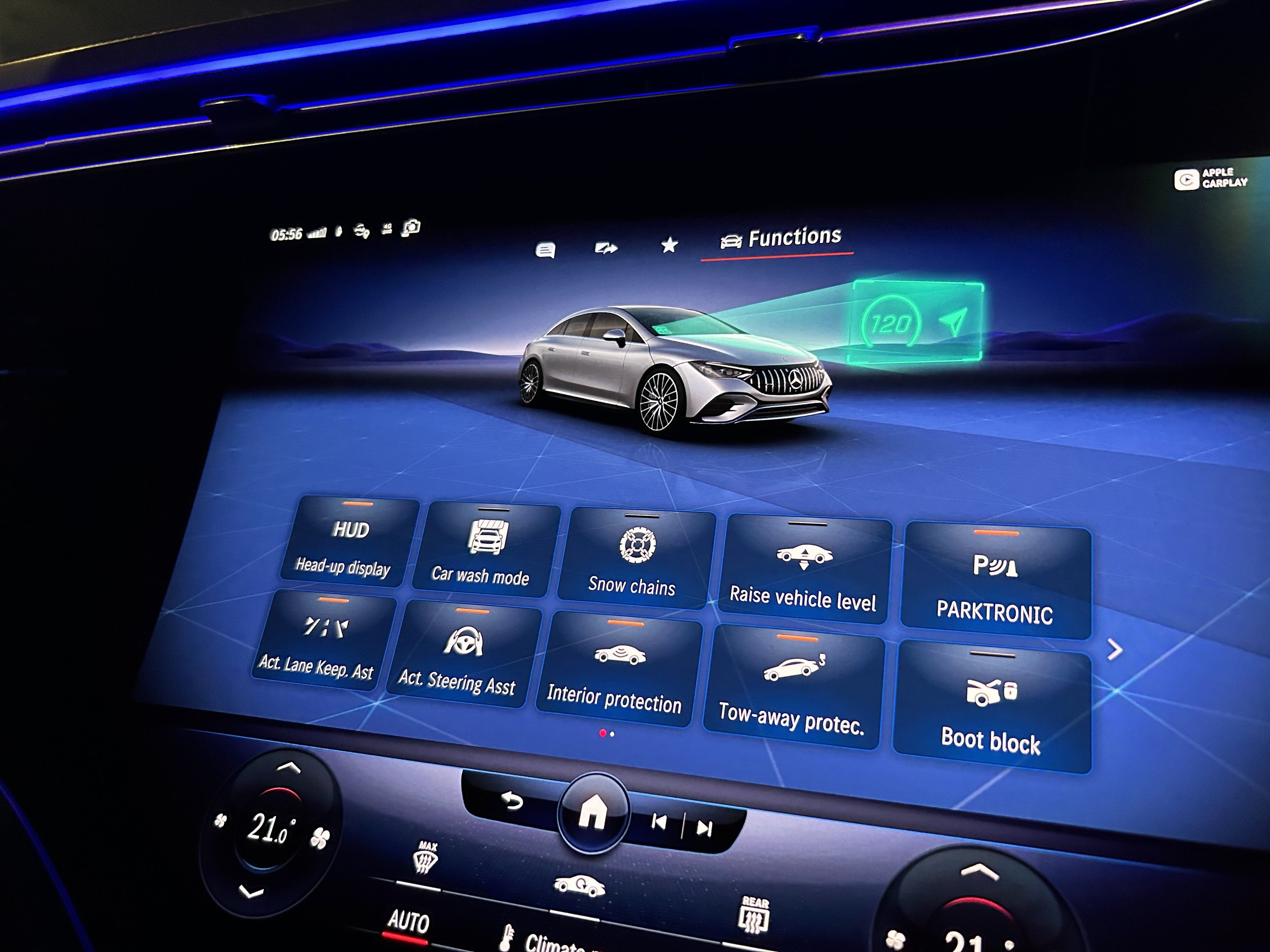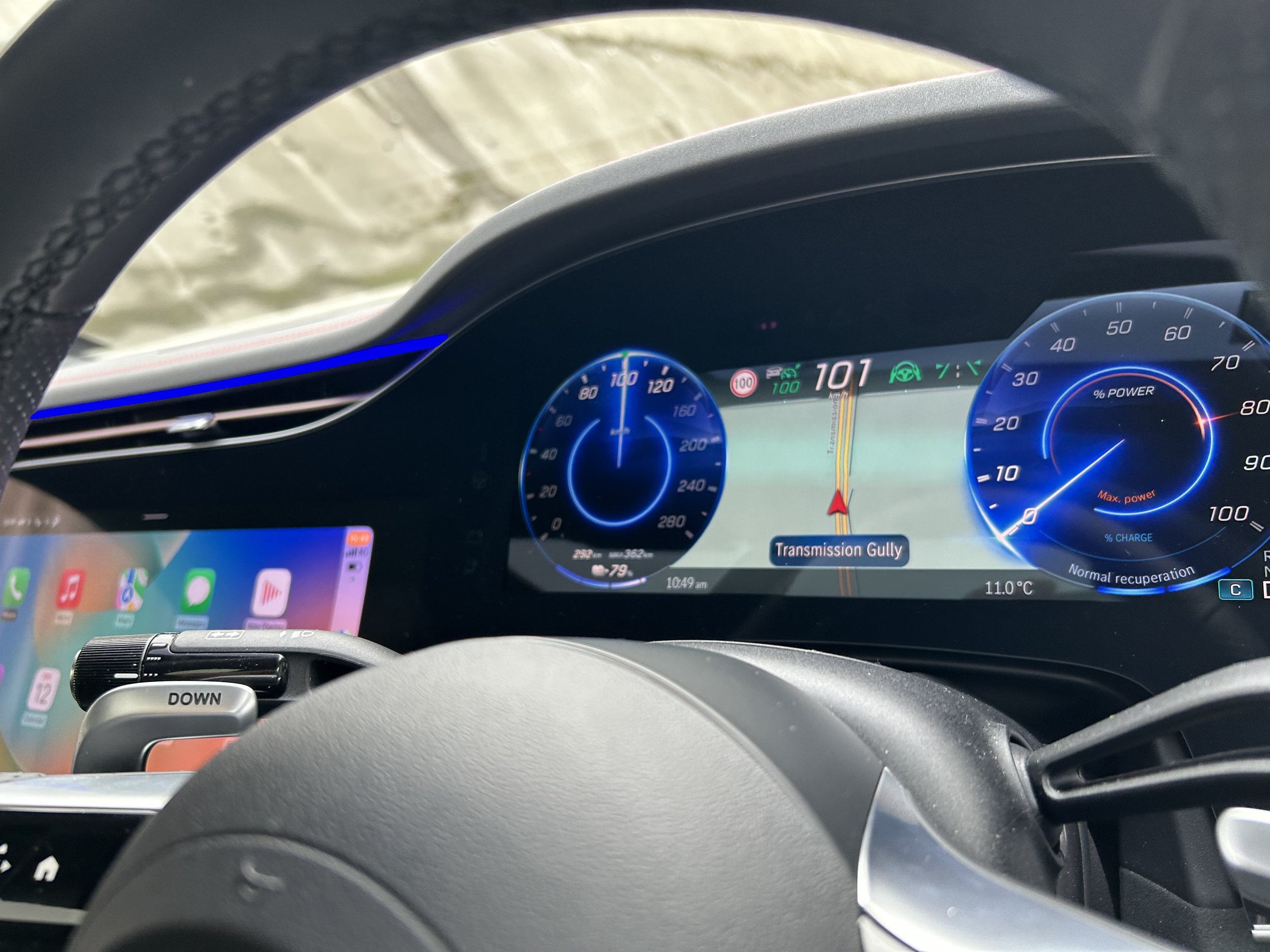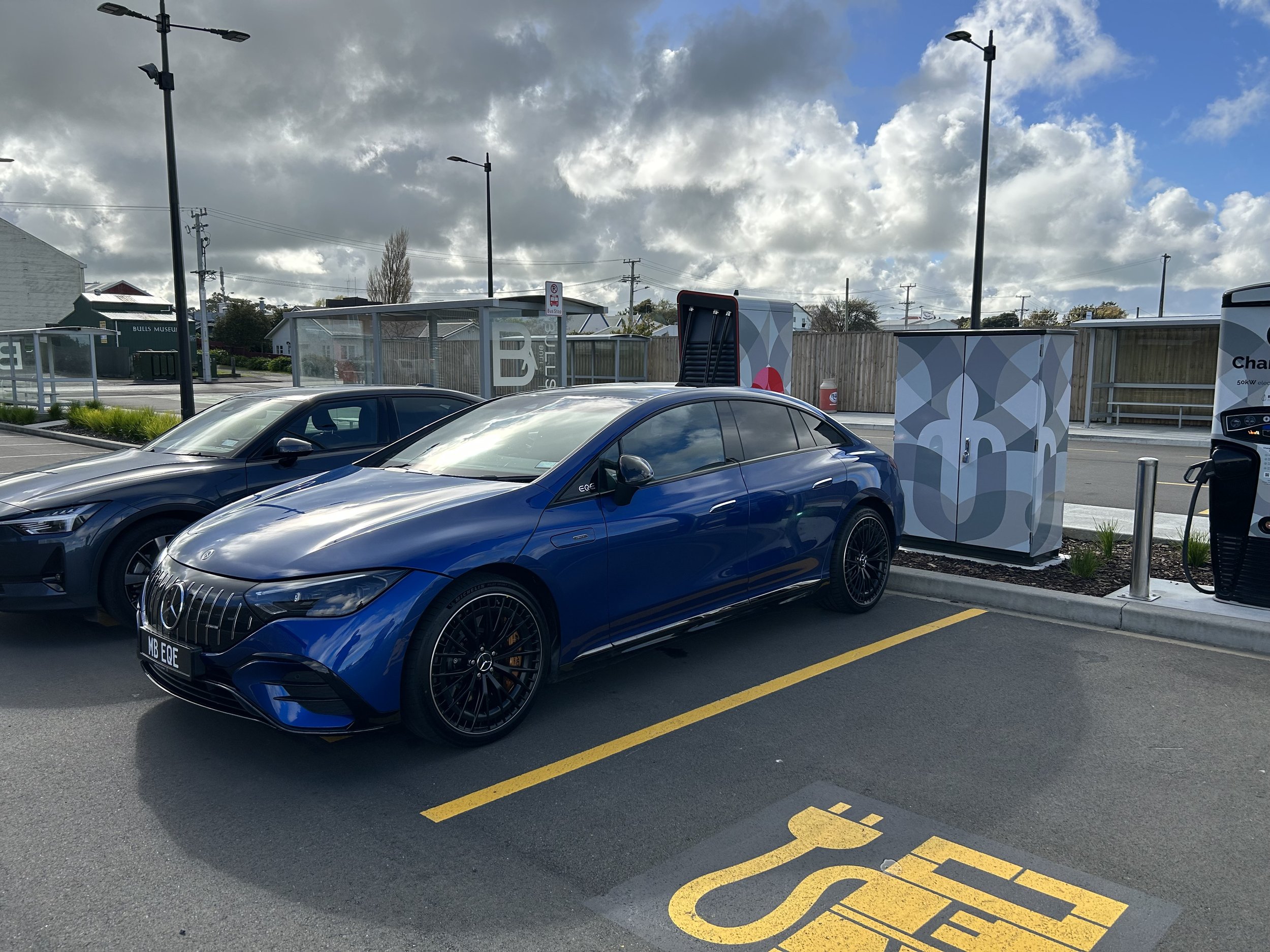Mercedes-Benz EQE 53 4Matic roadtest review: First class for business class spend
/Stuttgart’s new medium electric sedan slips in. It’s a better score than any rival. And a smarter choice than its big brother.
Price: $195,000.
Powertrain and economy: Dual motor electric, 460kW/950Nm, single speed, AWD, 21.8 kWh energy use (WLTP).
Vital statistics: 4946mm long, 1906mm wide, 1492mm high, 3120mm wheelbase, 430L luggage capacity, 20-inch alloy wheels.
We like: Better-suited to NZ than EQS; brilliant exterior styling, suave interior.
Not so much: Occasionally glitchy infotainment, cruise control; poor rear visibility; takes a while to replenish even on fast chargers.
AVAILABILITY at an achievable price with reputation for reliability was once arguably what it took to ‘sell’ a car; you could validly cite these as ingredients for the dizzying success of the Ford Model T, the Volkswagen Beetle and the Toyota Corolla.
These days? It’s hard not to imagine this being, more than anything else, the age when technology has become a core definer, not least with electrics.
Of course, the twist with those is that, as much as electrics ultimately pay their way when in owner operation, their development is hugely expensive. Costs are so much higher than with fossil-fuelled cars.
The period where the old and new technologies will find price equality is one many have offered view on; most concur it’s no time soon.
Last year, the J.D. Power automotive research company in the United States opined that EVs are barely past the halfway point. More recently, Ford said that in respect to its own products, the handover might occur in 2035. Renault’s chief executive, Luca de Meo, picks it might take longer still; the rising cost of the precious minerals that go into battery packs has set back the point of changeover, he argues.
If that seems a negative, there are still positives - the overall challenges aren’t keeping makers from spreading the technology they already to a wider, lower-spending audience.
Even though it is patently just for the well-heeled, the Mercedes Benz EQE is nonetheless good example of how this works.
As with other EQ-badged models, the 'E' tells you that this is an electric car in the same segment as the E-Class executive sedan, a fully premium product. Not cheap; including when measured against any fossil-fuelled E, the type it presently sits alongside but will ultimately replace.
The entry EQE 300 is $132,000. the EQE 53 4Matic Plus, on test, is the flagship, so sits $63k higher up the ladder. Which is a lot. On the other hand … it’s also a full $115k cheaper than EQS AMG 53 tested last year. A car with more kit and grunt, yet still with fundamentally the same technology, on the same platform.
No argument, the EQS is astounding. But, then, so is the EQE. If you have the wherewithal to spend a lot, it could be seen as the equivalent of nabbing first class travel for price of a business class ticket.
What makes it special? Well, it makes quite a statement on the styling side, obviously. Beyond that, it’s delivering good efficiency, very decent range, generous interior room and equipment and enjoyable driving manners.
Plus, it’s genuinely different and just about one of a kind. The most obvious rival, a fully electric BMW 5-Series has been announced, but won’t be here until near year-end. Audi has the e-tron GT, but it lands north of $200k. Realistically, the car Benz likely saw as the biggest competitor is the one that launched the electric executive class, yet ironically now beyond Kiwi grasp because it’s no longer made in right-hand-drive. Tesla’s Model S.
Which looks more like tomorrow’s world? Easy to answer that one. The EQ sedan styling is certainly dramatic, but why not be courageous?
One glance is enough not just to confirm that the aerodynamicists had a large part to play in shaping this car, but also that you might well have seen something quite like this previously.
Comparing with EQS sedan, the Russian doll side of things is plain. Not everyone will agree it’s a great looker; that stumpy front and rear with a big cabin takes some getting used to. I think the smaller-than-S scale brings a better balanced look. One interesting aspect is that it’s really actually smaller than the combustion-engined model. Who’d have thought when you see it in isolation? Those find the overall shape challenging can surely at least appreciate the detailing. The digital headlights, the clamshell bonnet, the door lines … all are the work of artisans.
Among the three EQE models, the 53 alone achieves the Hyperscreen, three large digital display screens that present individually or as one, spanning from one windscreen pillar to the other. The lesser cars still get a decent set-up that’d be fine enough, but it’s not too different from anything else in the market.
If you’re out to impress with something truly one-off, or committed to realising the car’s full tech potential, then Hyperscreen is the one. Delivering the latest version of the MBUX multimedia software, it’s a swish sophistication, with so much to show. And learn. A week with the EQS, which has all the same stuff, gave me a head start and yet, at the end of a week’s testing, the EQE remained an unfinished book.
Not that you need know what every prompt and swipe does. The basic functionalities are enough ti get by with and very easy. In actual ownership, you’d surely quick-fire accesses with the fingerprint scanner that allows configuration of a bespoke profile, actioned with a touch. If you’re not into infotainment, the big instrumentation screen, which alone is very configurable, in front of driver is almost enough to get by with.
Automatic climate control, LED ambient interior lighting and heated front seats with four-way lumbar support are all fitted, while the tech on board includes 360 degree cameras, wireless phone charging, full smartphone integration and so much more. Really top-notch smarts that work exceptionally include the augmented reality directions for the navigation system and the adaptive headlights.
In the ‘clever yet not always’ column place the adaptive cruise control that adjusts your speed according to the road ahead. It’s a bit ham-fisted. Occasionally, in fact, the cruise control would just shut down for no discernible reason. Likewise, the wireless Apple CarPlay integration. Mercedes' haptic touch controls on the steering wheel are a bit fiddly, too.
Still, overall there are more than enough small touches to impress. If you leave your phone charging when leaving the car, it reminds with a polite spoken reminder rather than a warning bong.
Overall, then, more than simply being finished with high-quality materials leave impression it’s a premium product. And a comfortable one, too.
There’s loads of adjustment in the wheel and front seats to get comfortable; generous foot room and legroom in the rear, at least in the outer two positions. And, despite the aerodynamic design, there is plenty of headroom inside for four adult occupants. The powered boot lid opens to reveal a decent 430-litre boot plus a small amount of space underneath to hold charging cables. The rear seats fold down (only from inside car) to make a flat boot.
How often does it need repeating: Electrics, for the most part, don’t drive like combustion-engined cars? Quietness, smoothness, exceptional immediacy … much longer dwell times, even when super-fast chargers are employed, when replenishing. That’s electric life.
Reminder that not all electric cars are alike is also worth expressing, because it’s true even within the EQ sedan range. Thought the test car would be the same as the EQS 53 AMG only carried so far; they’re similar in performance, for sure, but nowhere near as close ride quality, with the EQE setting an altogether better fist of it.
Both cars have air suspension and both are very controlled and precise, but the EQE in Comfort mode is markedly more compliant. If briskness isn’t required, you won’t easily leave this setting; so decent is it at erasing lumps and bumps. It’s the smart choice for everyday driving.
Another aspect about the EQE is that, though still a large, heavy and quite low-slung car, it feels more lithe and has more sense of lightness than the larger offer. Clearly the Sport settings enhance this, but the car’s diminished size, not least in respect to length, make it feel more natural for the NZ driving environment. You feel more relaxed about parking and manoeuvring through city traffic.
Performance-wise, the EQ cars are nicely tempered. Far from plain, but the entry stops short of unloading in Plaid-style heart-shock stonky; this is an executive car, not a Nurburgring lap setter.
The accelerator in normal mode offers smoother, less snappy responses than in Sport mode, but even then while it feels hugely swift, it’s not excessive. The steering is good, as well, with a pleasantly sharp feel.
The EQE's driver assistance systems can seem touch keen to kick in at times; the traction control won’t allow any slip in normal mode and just a fraction in Sport setting.
As with many other EVs, the EQE offers energy recuperation, but in its strongest level it's rather disconcerting to use, because it takes the brake pedal 'away' from under your foot, which feels odd. The mid setting, in which the pedal position remains constant, seemed more natural.
What really works for the EQE is that it is generally a largely silent cruiser. There’s no wind rustle and very little road noise. When you consider the size of the battery below the floor, it’s little wonder the road-generated sounds are so isolated. The lack of wind noise is down to the car’s extremely aero shape, which also effects all-round visibility. The view out front is fine, the side is okay but rearward visibility is restricted . Fortunately the EQE's camera system is great. When stopped at traffic lights the central display screen goes to a widescreen view of what’s around. Smart tech.
In terms of efficiency, it’s better than the EQS and not too bade or a car it is size and substance. I averaged 19kWh/100km in mixed roads and conditions, including two legs of continuous motorway running, each of around 90 minutes.
While the Mercedes EQE has a name that positions it as an electric E-Class, the reality is that it’s very different to the fossil-fuelled kind in a myriad of ways; some great, some a bit challenging. It's good to drive, though; the electric powertrain is above average, the technology is amazing and, above all else, it presents as a comfortable car.
As an expression of what an electric car should be like? Well, I’d have thought Benz has got that one nailed, and yet …
A colleague who had this same car is still getting over being ordered, by a irate Nissan Leaf owner, to depart a public recharger. On grounds the Benz couldn’t possibly be an electric car.

